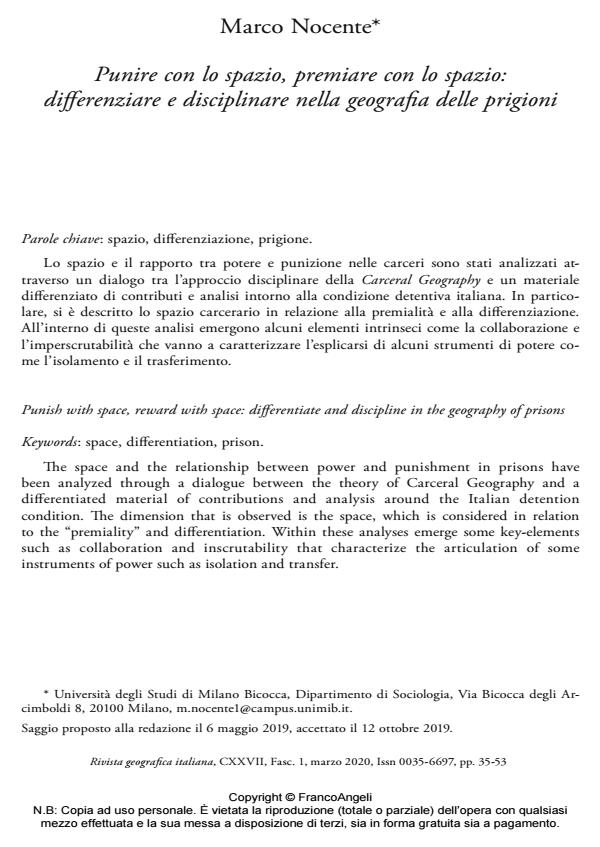Punish with space, reward with space: differentiate and discipline in the geography of prisons
Journal title RIVISTA GEOGRAFICA ITALIANA
Author/s Marco Nocente
Publishing Year 2020 Issue 2020/1
Language Italian Pages 19 P. 35-53 File size 146 KB
DOI 10.3280/RGI2020-001002
DOI is like a bar code for intellectual property: to have more infomation
click here
Below, you can see the article first page
If you want to buy this article in PDF format, you can do it, following the instructions to buy download credits

FrancoAngeli is member of Publishers International Linking Association, Inc (PILA), a not-for-profit association which run the CrossRef service enabling links to and from online scholarly content.
The space and the relationship between power and punishment in prisons have been analyzed through a dialogue between the theory of Carceral Geography and a differentiated material of contributions and analysis around the Italian detention condition. The dimension that is observed is the space, which is considered in relation to the "premiality" and differentiation. Within these analyses emerge some key-elements such as collaboration and inscrutability that characterize the articulation of some instruments of power such as isolation and transfer.
Keywords: Space, differentiation, prison.
- Spazio, diritto e la loro relazione: percorso e confini della legal geography Ettore Asoni, in RIVISTA GEOGRAFICA ITALIANA 1/2024 pp.5
DOI: 10.3280/rgioa1-2024oa17374
Marco Nocente, Punire con lo spazio, premiare con lo spazio: differenziare e disciplinare nella geografia delle prigioni in "RIVISTA GEOGRAFICA ITALIANA" 1/2020, pp 35-53, DOI: 10.3280/RGI2020-001002